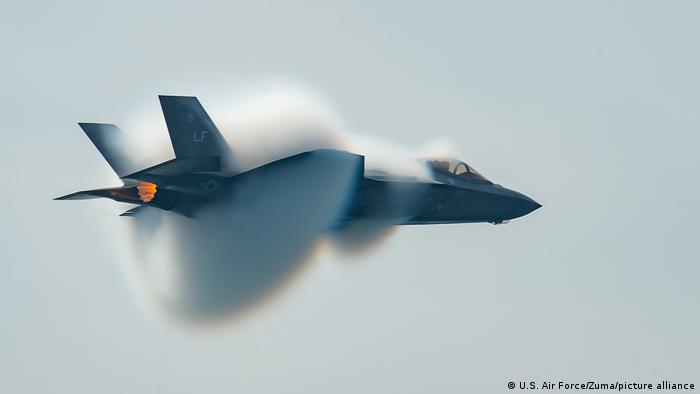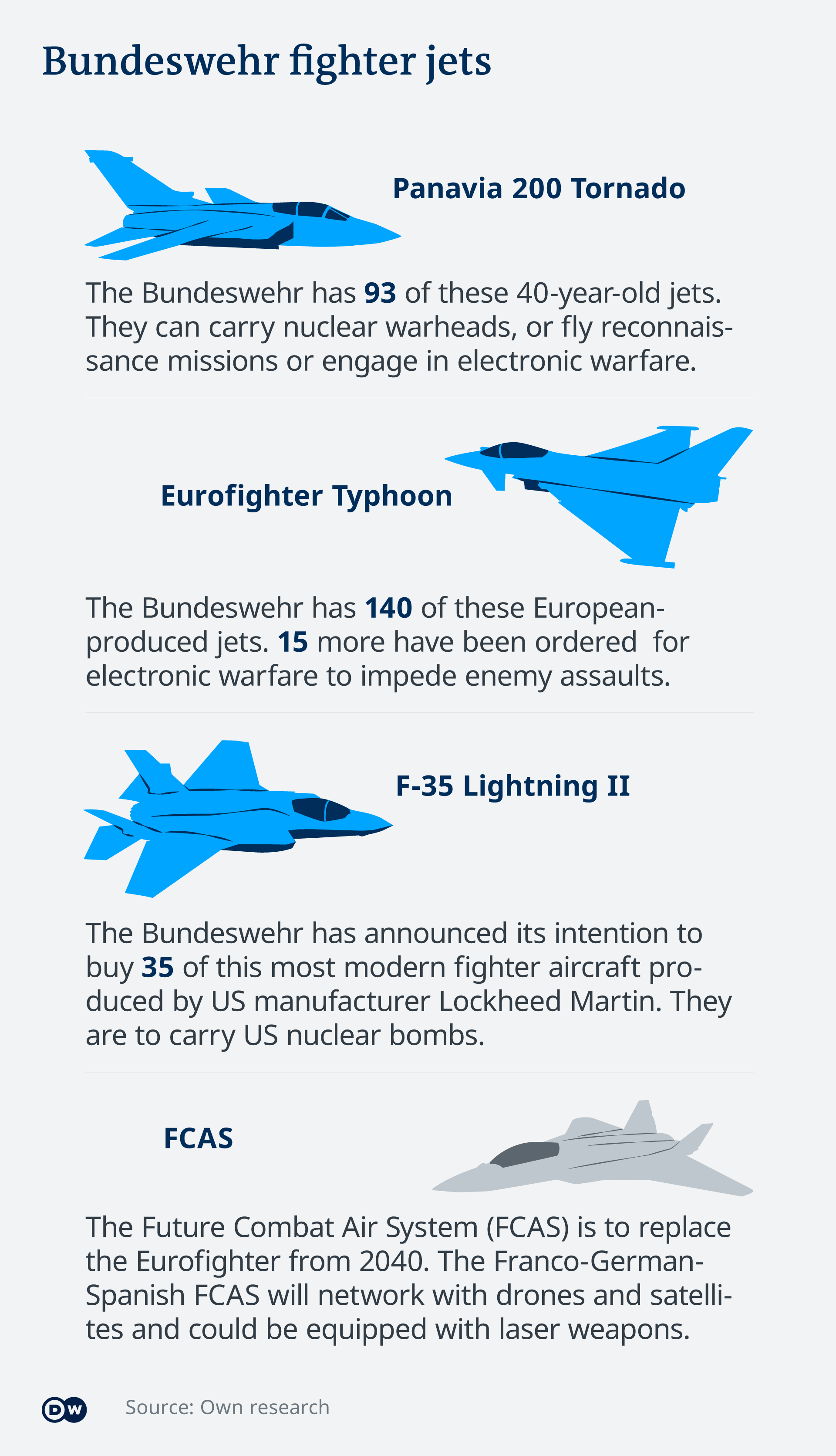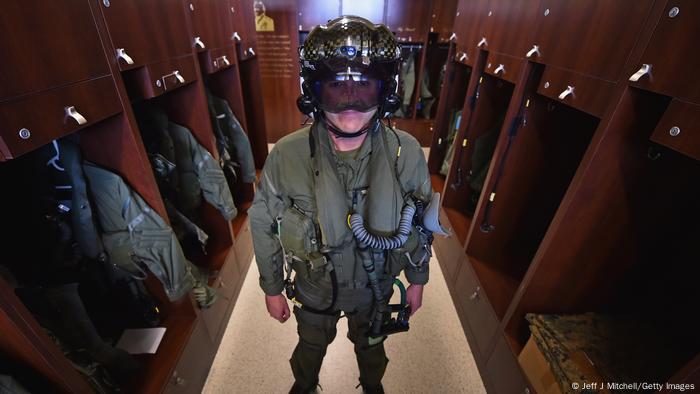Germany wants to upgrade its military with the world's most modern fighter jet. The order is worth billions. But is it a good fit?

The F-35 is a state-of-the-art stealth bomber, which Germany's air force has long coveted
The F-35 Lightning II is considered the most modern fighter jet in the world. The jet, made by US manufacturer Lockheed Martin, is considered more than just a fighter aircraft. It is essentially an armed computer with a jet engine that can network with other aircraft in the air as well as ground forces, processing thousands of pieces of information every second.
But is it the right jet for the Bundeswehr? Defense Minister Christine Lambrecht (SPD) announced on Monday that Germany wants to buy 35 such jets to replace the Tornado fighter jets put into service more than 40 years ago, which, like the F-35, can carry American atomic bombs to their target.
"There are military reasons in favor of the F-35," said Rafael Loss, a security expert at the think tank European Council on Foreign Relations. "If you have to deliver the nuclear bomb, you better do it with a stealth aircraft than with an aircraft that doesn't have that capability," he told DW. "We need that lower radar signature and the ability to detect and engage targets at long range. And the F-35 can do that better than any other air combat system on the market right now."
Billions of euros
But those capabilities come at a cost. Loss expects the 35 fighter jets to cost about €4 billion ($4.4 billion). "On top of that, of course, there would be the operating costs, which are substantial," he says. Moreover, several hundred million euros would probably have to be budgeted for the necessary conversion of German military airports.
Without Russia's war against Ukraine, such an investment would hardly have been conceivable. But now the German government wants to upgrade the Bundeswehr with a special fund of €100 billion. And political resistance to a new nuclear bomber is also low. Even the Greens have offered little criticism. Though once founded by pacifists, they are now in Germany's governing coalition.
Only the opposition Left Party is unequivocally against the planned acquisition of the F-35. "We reject the arming of the Bundeswehr with new fighter jets capable of carrying nuclear weapons," said Ali Al-Dailami, defense policy spokesman for the Left faction in the Bundestag, the German parliament. "Nuclear sharing, according to which US nuclear weapons would have to be dropped by Bundeswehr pilots, does not create security but fuels the danger of nuclear war in Europe. The horrors of the Ukraine war must not be misused as a pretext for an arms race."
The German air force, it seems, is relieved to be able to put a successor to the obsolete Tornado aircraft into service before the end of the decade. Lieutenant General Ingo Gerhartz, the air force's highest-ranking soldier, pointed out that many other European armies had also opted for the US fighter. "It strengthens our ability to join them in securing NATO airspace and defending the alliance," he said.

The UK, Italy, the Netherlands, and, most recently, Finland and Switzerland have opted for the F-35. For them, air defense cooperation with Germany could become easier.
"In France, on the other hand, the decision has been met with frustration," says Paul Maurice, a researcher at the French Institute of International Relations in Paris. "The F-35 is understood here as a symbol of US power within NATO. After all the speeches about European autonomy and sovereignty, one had expected Germany to be more aligned with a European arms policy."
After all, he said, what would happen if the US withdrew forces from Europe, as happened under President Donald Trump? "That could happen with the next president, but also already after the midterm elections," Maurice says. Europe needed to be prepared for such a development and become more autonomous in security matters, he adds. "That takes ten, fifteen years of preparation, so it needs to start now."

Pilots need a special high-tech outfit to fly the F-35B Lightning II
A future for FCAS?
In France, there are fears that the purchase of the F-35 could jeopardize the Franco-German-Spanish FCAS, short for Future Combat Air System. The billion-dollar project is meant to develop a state-of-the-art European fighter by 2040 to replace the French Rafale and the German Eurofighter. According to Maurice, the defense community in Paris is currently asking themselves: "Will Germany still need FCAS at all? Or are the F-35s perhaps not a transitional solution, but a long-term solution?"
Berlin has emphasized that it is acquiring the F-35s only as a replacement for the Tornados and not for other tasks. Alternatives discussed in recent years, such as the older American F-18 or the Eurofighter, would first have had to go through a lengthy procedure to be considered capable of carrying nuclear bombs.
And, the defense minister announced, 15 more European-made Eurofighters would be purchased for electronic warfare, i.e., radar countermeasures. In addition, Lambrecht has offered assurances that there was still enough money left to push FCAS further. Just like the F-35, this future is likely to be very sophisticated — and very expensive.
LA REVUE GAUCHE - Left Comment: Search results for PERMANENT ARMS ECONOMY
No comments:
Post a Comment